NOAA Fisheries is responsible for the protection, conservation, and recovery of endangered and threatened marine and anadromous species under the Endangered Species Act.
![]()
NOAA Fisheries is responsible for the protection, conservation, and recovery of more than 160 endangered and threatened marine and anadromous species under the Endangered Species Act. The goal of the ESA is to conserve these species and the ecosystems they depend on.
To implement the ESA, we rely on the best available science. We work with international federal, tribal, state, and local agencies, as well as nongovernmental organizations and private citizens.
Enacted in 1973, the ESA continues to be a powerful and effective tool for conserving species and their habitats. Less than 1 percent of the species listed under the ESA have gone extinct. Others have been recovered to the point where they no longer need protections under the ESA.
![]()
Researchers prepare to implant a tracking tag in a steelhead smolt from the Nisqually River to study predation by harbor seals. Researchers found that seals may consume as many as a third of the steelhead. Credit: Megan Moore/NOAA Fisheries
Feature Story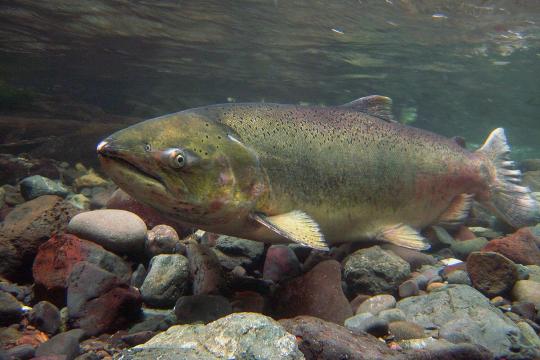
Female Chinook Salmon guarding her nest. Credit: John McMillian
Feature Story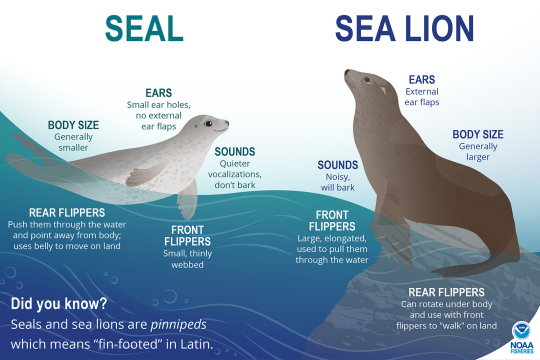
At first glance, seals (true or “earless seals”) and sea lions look fairly similar. Taking a closer look, these are some of the general differences to tell these animals, such as on the harbor seal (left) and California sea lion (right) pictured above.
Feature Story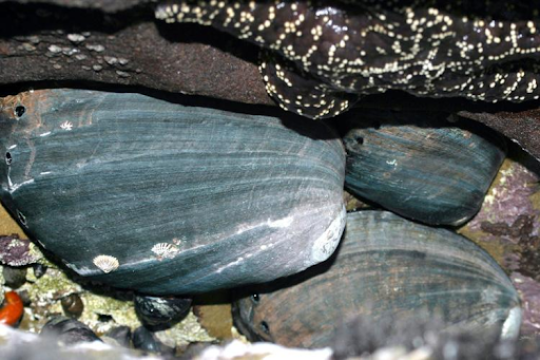
Black abalone are an endangered marine snail that face climate change threats such as increased water temperatures, sedimentation, and ocean acidification. Credit: NOAA Fisheries.
Feature StoryGenerally, NOAA Fisheries manages marine species and anadromous species (fish that are born in freshwater, spend most of their lives in saltwater, and return to freshwater to spawn) including whales, corals, sea turtles, and salmon. The U.S. Fish and Wildlife Service manages land and freshwater species such as polar bears, sea otters, and manatees.
The Endangered Species Act requires listing of species regardless of where they are found. Endangered foreign species include the vaquita porpoise, Mediterranean monk seal, and Southern right whale.
Before an animal or plant species can receive ESA protections, it must first be added to the federal lists of threatened and endangered wildlife and plants . Once NOAA Fisheries determines that a species warrants listing, it adds the species to its lists at 50 CFR 223.102 (threatened species) and 50 CFR 224.101 (endangered species) . All plant and animal species, except pest insects, are eligible for listing.
The conservation status of all species listed under the ESA must be reviewed at least once every 5 years. The review evaluates whether the endangered or threatened classification is still appropriate for the species. These 5-year reviews consider recent recovery progress and the level and impact of ongoing and new or future threats. They also incorporate any new information about the species.
One of the main purposes of the ESA is to provide a means for conserving the ecosystems that threatened and endangered species depend upon for survival and recovery. Specific areas and areas that contain features that are essential for the conservation of an ESA-listed species may be designated as “critical habitat.” Once critical habitat is designated, federal agencies consult with NOAA Fisheries to ensure their actions are not likely to destroy or adversely modify the critical habitat. Critical habitat does not affect land ownership or set up a refuge or closed area, and it does not restrict private citizens’ use of the area. Critical habitat also does not mandate government or public access to private lands.
Recovery is the process of restoring listed species and their ecosystems to the point where they no longer require ESA protections. To guide efforts to bring these species back to health, we develop recovery plans that outline the path and activities required to restore and secure self-sustaining wild populations. We collaborate with federal, state, and local governments, as well as tribal nations and interested nongovernmental stakeholders, to create these plans.
Conservation groups; academia; tribal nations; and federal, state, and local governments have all made important contributions to the recovery of many endangered and threatened species. We partner with these organizations in many ways to minimize harmful effects on listed species and work toward their recovery.
We have issued regulations, national policies, and guidance to promote efficiency and consistency in implementing the ESA to conserve and recover marine species.
Learn how NOAA Fisheries works with partners to protect and recover endangered and threatened marine species.
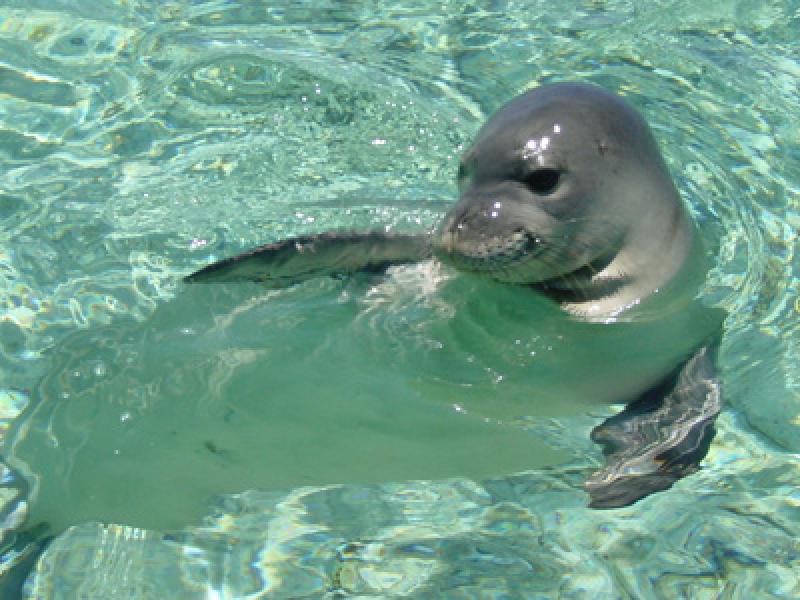
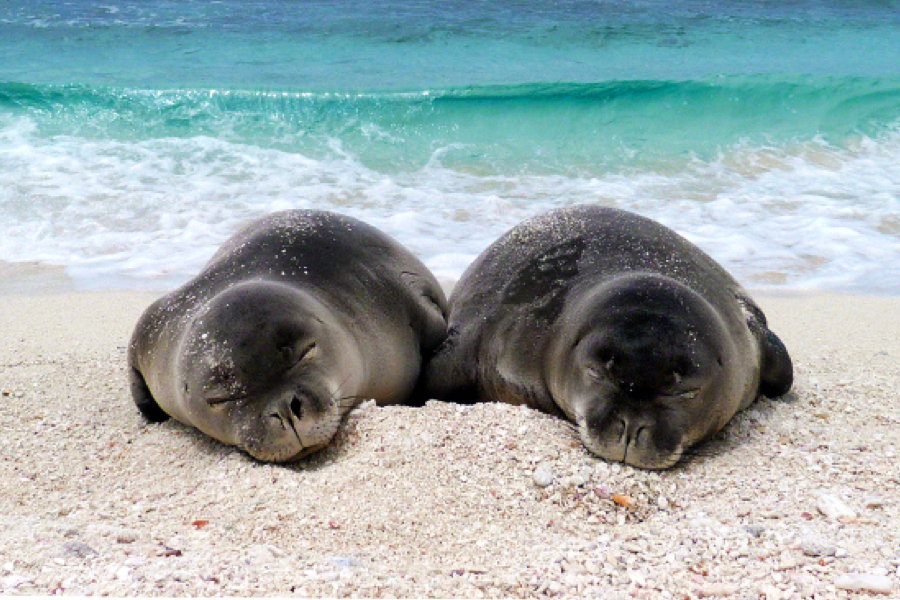
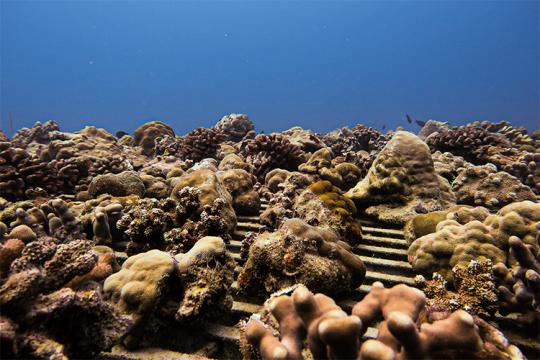
Coral nurseries are one tool NOAA uses to restore reefs, which are vital habitats for many managed seafood species. Credit: NOAA Fisheries
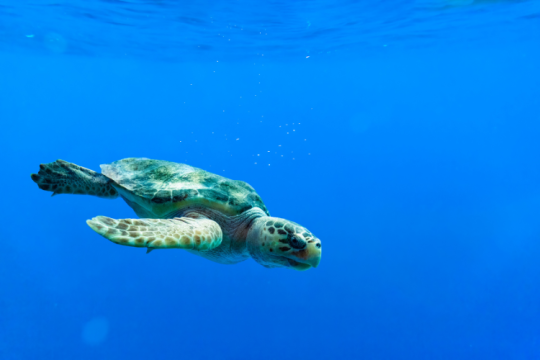
A loggerhead sea turtle swimming in a deep blue open ocean. Credit: Adobe Stock
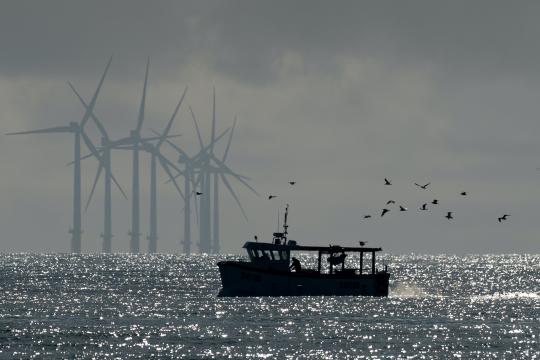
A small fishing vessel near wind turbines. Credit: Bob Brewer on Unsplash
NOAA Fisheries and the U.S. Fish and Wildlife Service share responsibility for implementing the Endangered Species Act. We are responsible for most marine species, including whales, seals, sharks, and coral. We also implement measures to protect anadromous species—ones that migrate between fresh and saltwater. U.S. FWS is responsible for terrestrial and freshwater species, as well as sea birds, sea otters, manatees, and polar bears. The two agencies share jurisdiction over species such as sea turtles, Gulf Sturgeon, and Atlantic salmon.
Under the ESA, a species is considered:
Before a species can receive the protections provided by the ESA, it must first be added to the federal lists of endangered and threatened wildlife and plants. We are responsible for deciding whether species meet the requirements to be listed. This process often starts with a person or organization petitioning for us to list a species as threatened or endangered. Once we have determined that a species may be threatened or endangered, it becomes a candidate for listing.
Under the ESA, anyone under the jurisdiction of the United States is prohibited from doing the following regarding endangered species:
The prohibited activities that apply to all endangered species do not automatically apply to species listed as threatened. We are responsible for identifying the activities that need to be regulated or prohibited to protect threatened species based on their specific biology, threats, and needs.
We issue permits and authorizations that allow individuals and groups to engage in activities that are otherwise prohibited under the ESA for specific purposes. Examples of activities covered by these permits include:
Once a species is listed, we monitor their population and review their status every 5 years to ensure that the listing is still accurate. These 5-year reviews may kick off the process for reclassifying or delisting a species.
One of the main goals of the ESA is to conserve the areas or habitat features that threatened and endangered species depend on for survival and recovery. Examples of these critical habitats include nursing, pupping, or breeding sites or foraging areas.
We are responsible for determining whether there are areas that meet the definition of critical habitat for listed marine and anadromous species and designating these areas based on the best available scientific data.
Critical habitat designations only apply to federal actions. They do not affect land ownership or restrict private citizens’ use of the area. Once critical habitat is designated, federal agencies are required to consult with us to ensure any actions they fund, authorize, or take part in are not likely to destroy or harm the critical habitat.
Endangered and threatened species have different needs that require different conservation strategies to achieve recovery. We set goals for each species’ recovery, which are laid out in recovery plans. Each plan outlines the tasks required to reduce or eliminate threats and restore or establish self-sustaining wild populations, so that they no longer require ESA protections.
Recovery actions depend on the particular species, its life history needs, and the threats it faces. Examples of the wide range of conservation measures we implement include:
After a species has recovered, we remove the species from the list—this is known as “delisting.” Then we monitor the species status for no less than 5 years after delisting to ensure its recovery is sustained.
We consult with other federal agencies on any action they take that may impact listed species or their critical habitat. Consultations are designed to help federal agencies meet the requirement that their actions are not likely to jeopardize the continued existence of a species or destroy designated critical habitat. The consultation process varies depending on the complexity of the project or action.
We work with local, state, and other federal agencies to enforce ESA rules and regulations in U.S. federal, state, and territorial waters.
Endangered Species Act ImplementationLearn how species are added to the Endangered Species Act and what we do to conserve and restore listed species.
Science is critical to understanding the needs and status of protected species populations, as well as the threats to their health and well-being. Our scientists and partners use a variety of time-tested and advanced technologies—including drones, satellite tagging and tracking, and genetic research—to study marine life. What they learn helps us develop and implement recovery efforts for endangered and threatened species.
We have also established the National Protected Species Toolbox Initiative to support the development of analytical products and applications that aim to investigate impacts and consequences of human and environmental disturbance on endangered and threatened marine life and other protected species.
Ship-based and aerial surveys are critical to achieving our marine mammal and sea turtle population assessment goals. Our science centers conduct and manage a limited number of marine mammal- and sea turtle-focused surveys each year, often with external collaborators. The number of surveys depends on funding and available ship time and flight time.
Sound from human activities may impact the underwater environment. Our scientists support and conduct research to examine the potential impacts on marine animals and increase our understanding of:
Fisheries bycatch is a threat to endangered and threatened species worldwide. Together with the fishing industry, we work to minimize bycatch by researching and developing technological solutions and changes in fishing practices. These include gear modifications, avoidance programs, and improved fishing practices in commercial and recreational fisheries.
Understanding the impacts of climate change on marine life, including threatened and endangered species, is a high priority for NOAA. We have much to learn about the effects of global and regional climate dynamics on species distribution, abundance, and prey availability. That’s why NOAA scientists work at sea, on shore, and in laboratories to observe, measure, and monitor changes and forecast future conditions.
The Arctic in particular is a window to changing climate patterns. It serves as a living laboratory where we can observe and record the impacts of receding sea ice, warming sea surface temperatures, and altered ecosystem dynamics. These climate-related changes affect how marine ecosystems function. They also impact local and native tribal communities that depend on Arctic resources for their livelihood and sustenance.
Endangered Marine Species Conservation and ScienceEndangered and threatened species conservation relies on the best available science on protected species populations and the threats to their health.
Of all the species NOAA Fisheries protects under the Endangered Species Act, we have identified 10 for which immediate, targeted actions can stabilize the population and prevent extinction.
For some, their numbers are so low that they need to be bred in captivity; others are facing human threats that must be addressed to prevent their extinction. We launched the "Species in the Spotlight" initiative in 2015 to bring greater attention and marshal resources to save these highly at-risk species:
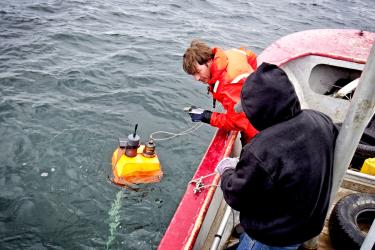
We chose these 10 species because they are all endangered, their populations are declining, and they are considered a recovery priority #1C.
A recovery priority #1C species is one whose extinction is almost certain in the immediate future because of rapid population decline or habitat destruction, and its survival conflicts with construction, development, or economic activity.
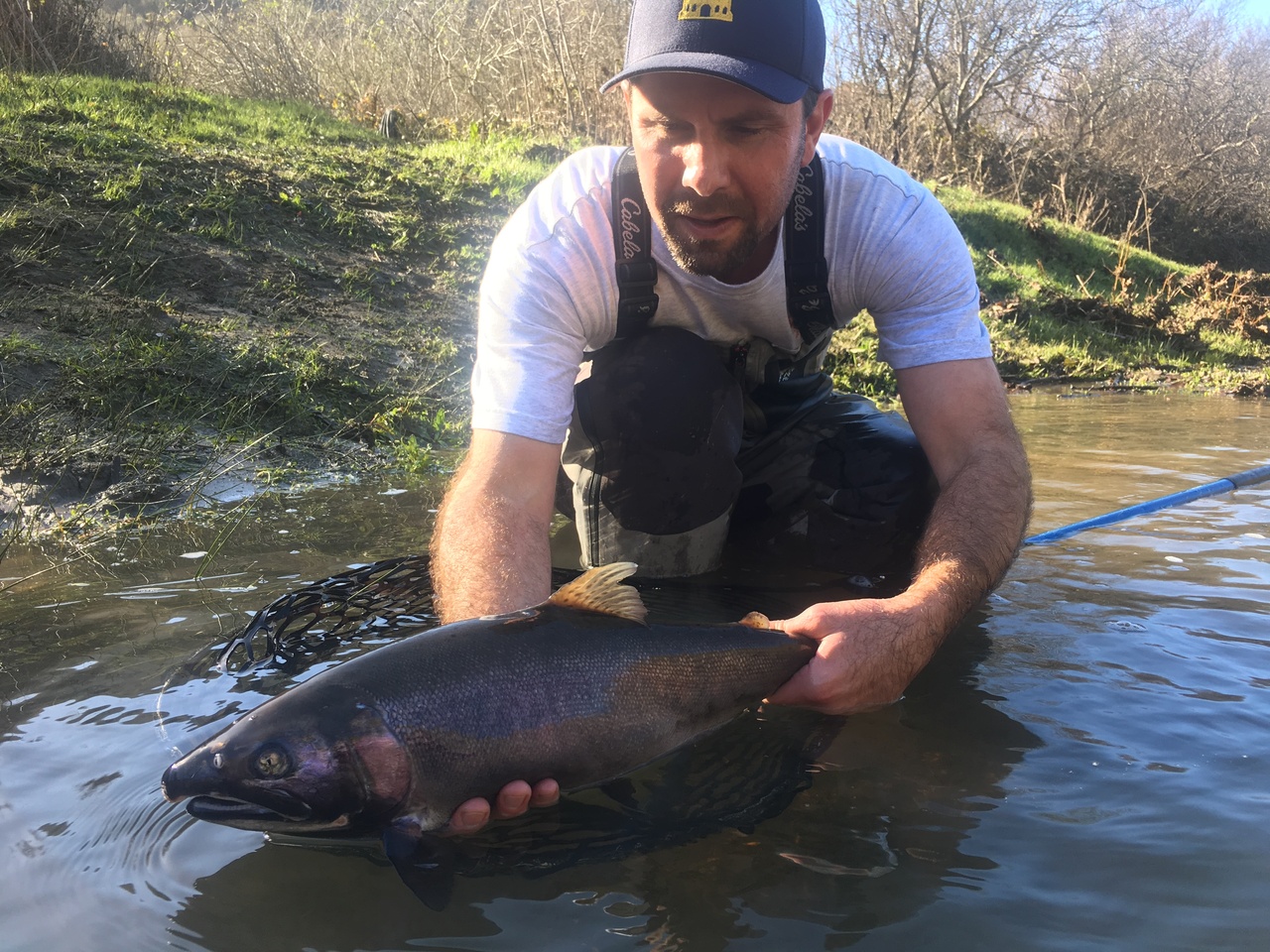
In most cases, we understand the limiting factors and threats to these species, and we know that the necessary management actions have a high probability of success.
In some cases, we are prioritizing research to better understand the threats so we can fine-tune our actions for the maximum effect.
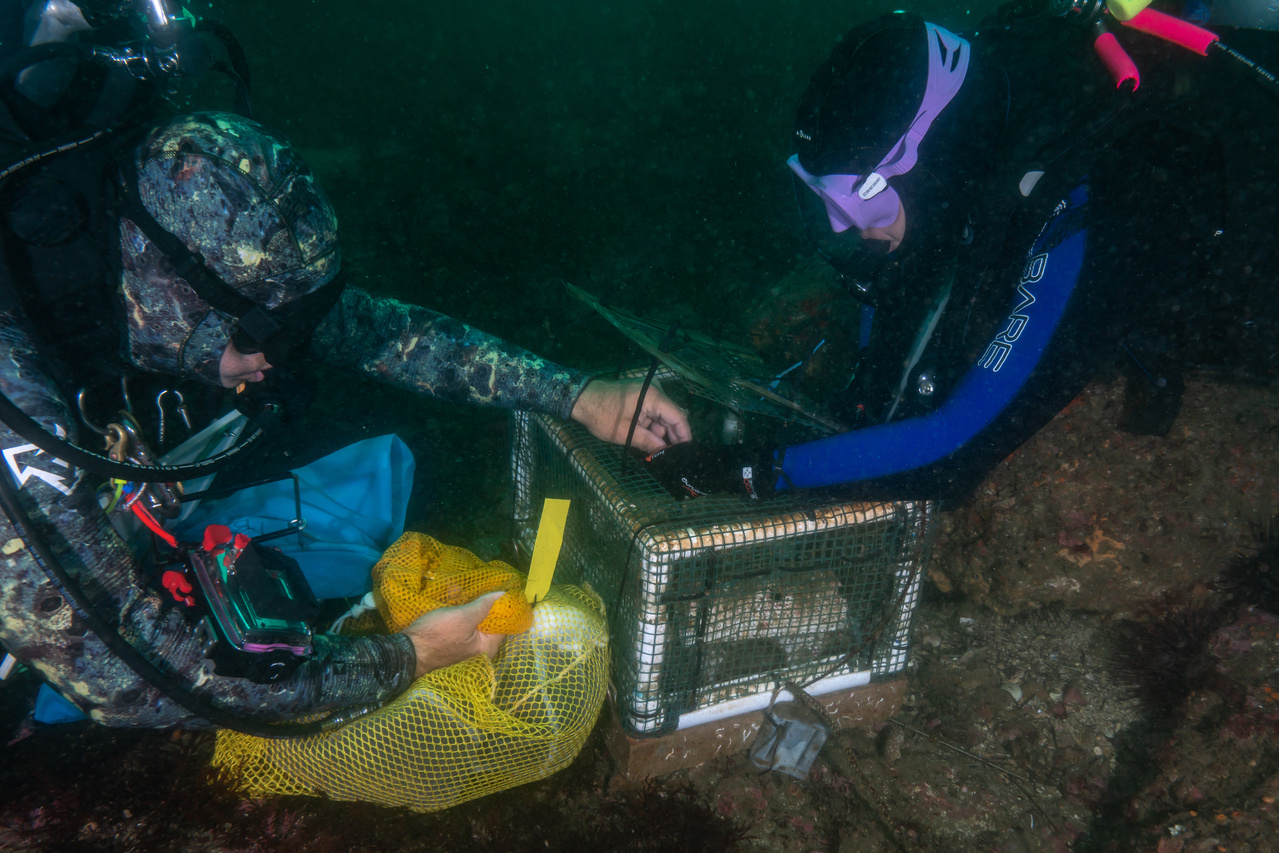
We know we can’t do this alone. A major component of the Species in the Spotlight initiative is to expand partnerships and motivate individuals to work with us to get these species on the road to recovery.
For each species, we developed priority action plans that outline what we need to do to prevent extinction.
Actions we and are partners are focusing on include:
The Species in the Spotlight Initiative brings together greater attention and resources to save nine endangered species considered most at risk of extinction.
Conservation groups, academia, tribal nations, and federal, state, and local governments all make important contributions to the protection and recovery of endangered and threatened species. We work with these organizations in many ways to minimize harmful effects on listed species and work toward their recovery.
States play an essential role in conserving and recovering species that have been or may be listed under the ESA. Under the ESA, we can enter into cooperative agreements with states that maintain “adequate and active” programs for the conservation of threatened and endangered species. Those agreements allow us to both help with and fund the implementation of state conservation programs.
We provide funding to states that have entered into cooperative agreements in the form of Species Recovery Grants to States. They support management, research, monitoring, and outreach activities that have direct conservation benefits for listed species, recently delisted species, and candidate species within that state.
Similarly, Species Recovery Grants to Tribes support tribally-led management, research, monitoring, and outreach activities. Tribes are important stewards of marine resources and critical partners in the implementation of recovery actions.
Under the ESA, we must list species as endangered or threatened regardless of where they are found. The ESA benefits foreign species by restricting their commercial trade and facilitating bilateral and multilateral efforts and agreements. Listing foreign species can also increase global awareness of the threats they face, which may fuel conservation efforts.
To prevent international trade from threatening listed species, the United States partners with other nations under the Convention on International Trade in Endangered Species of Wild Fauna and Flora. We are also a party to the Specially Protected Areas and Wildlife Protocol of the Cartagena Convention. Under this protocol, we collaborate with other nations of the wider Caribbean region to conserve and manage threatened and endangered species.
Endangered Species Conservation PartnersNOAA Fisheries works with conservation groups, academia, and state and local governments to protect and recover endangered species.